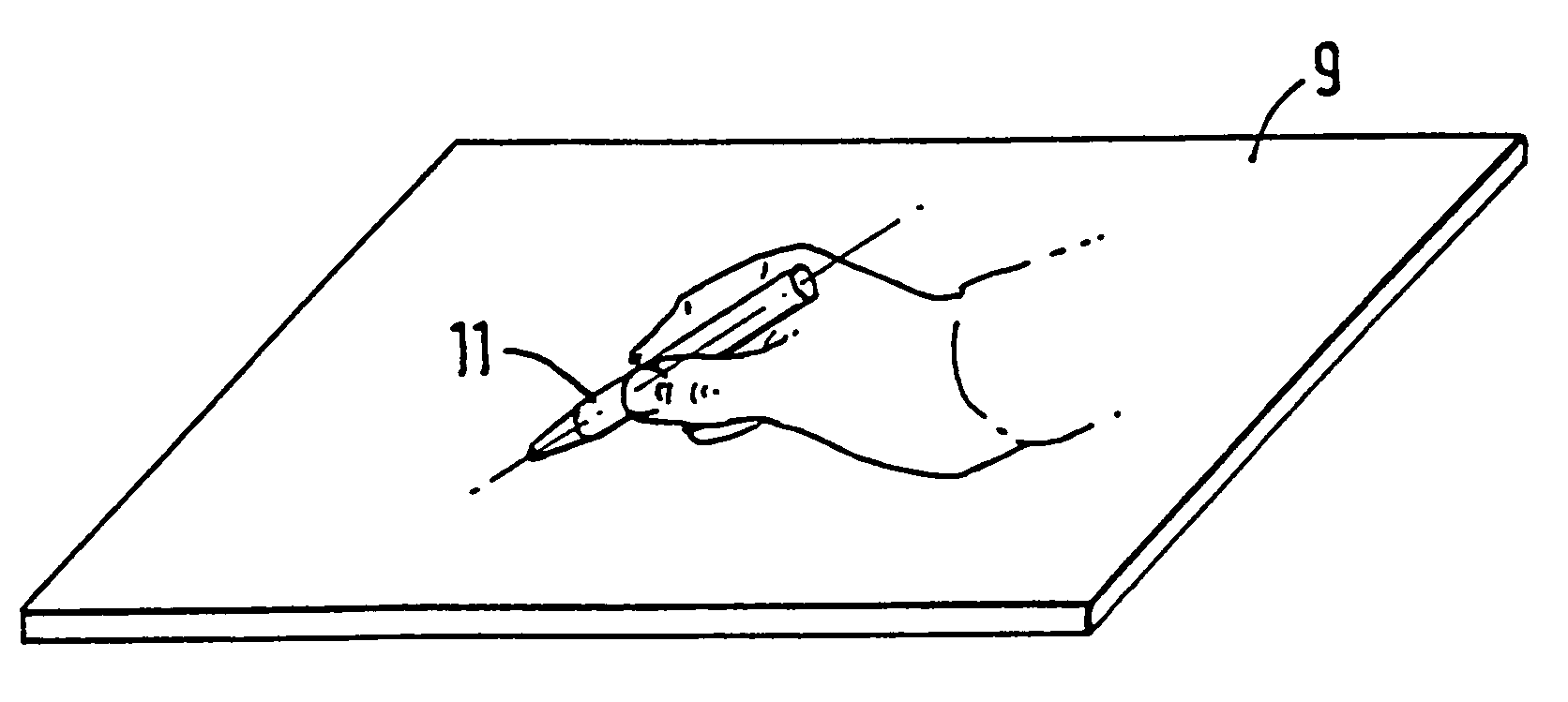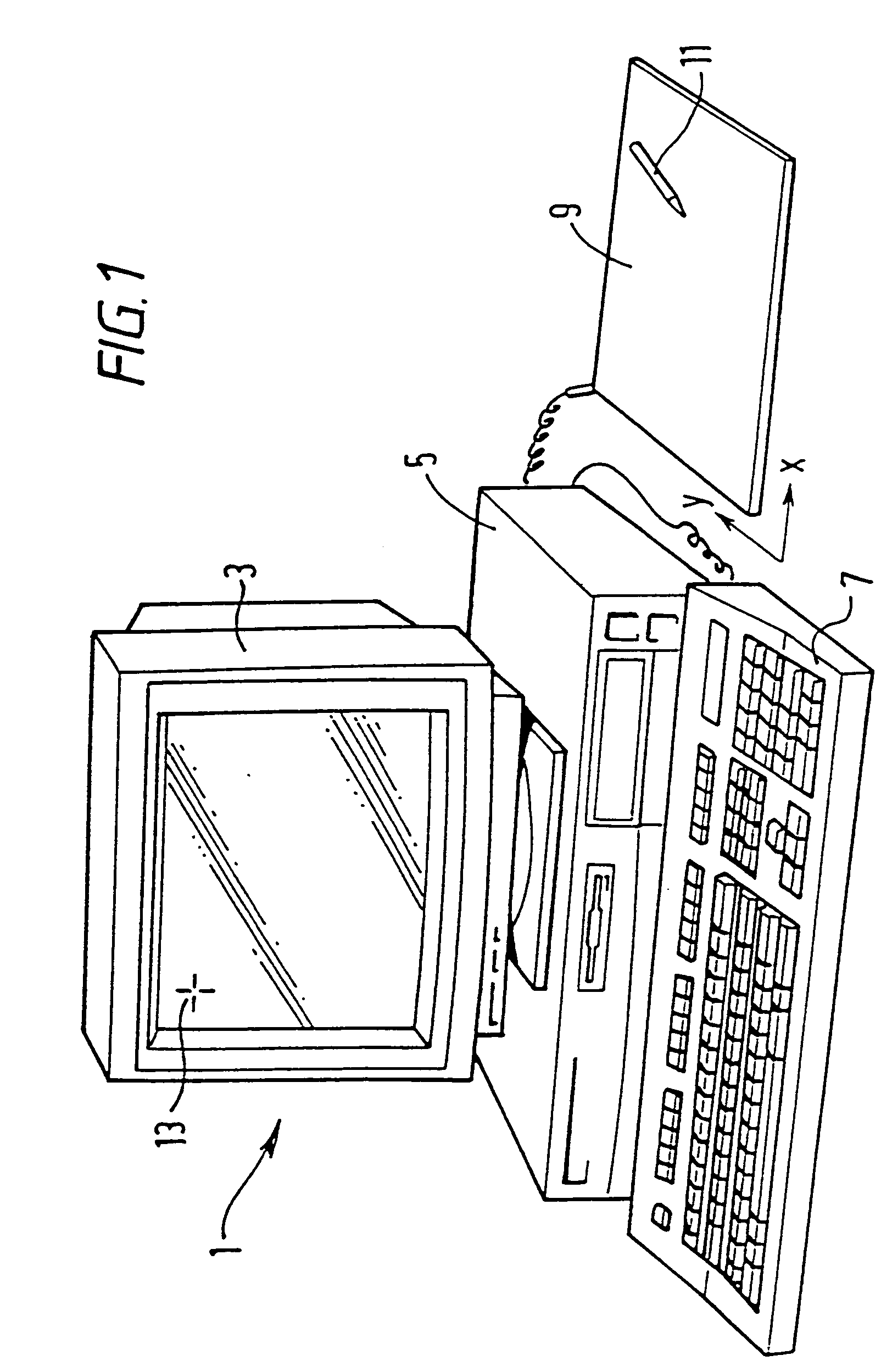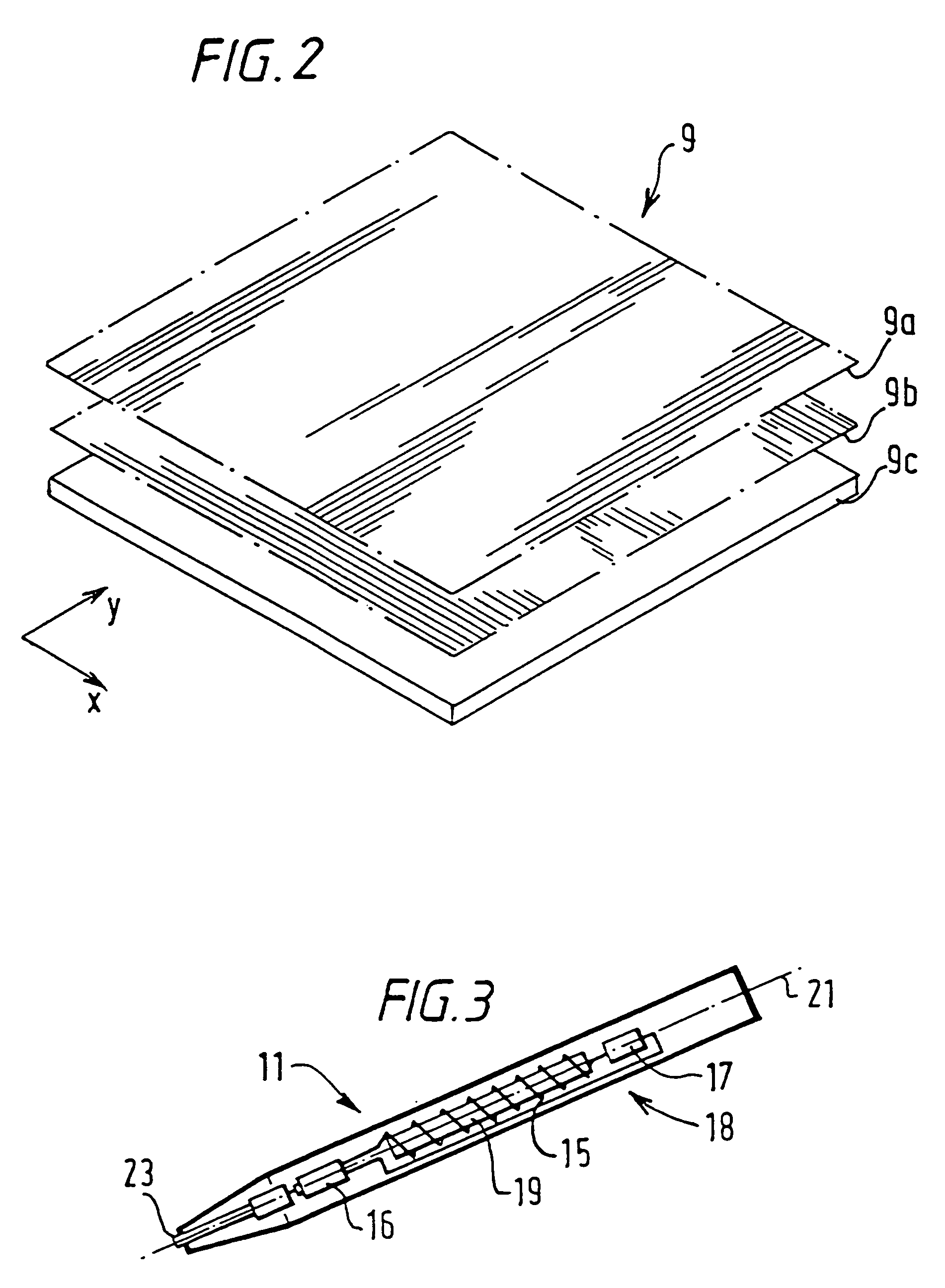Position detector
a detector and position technology, applied in the field of position detectors, can solve the problems of system failure to operate in pulse-echo mode of operation, inability to detect positional errors, and inability to operate in pulse-echo mode, etc., and achieve the effect of convenient and suitability
- Summary
- Abstract
- Description
- Claims
- Application Information
AI Technical Summary
Benefits of technology
Problems solved by technology
Method used
Image
Examples
Embodiment Construction
[0059]FIG. 1 schematically shows a computer system 1 having a display 3, a main processing unit 5, a keyboard 7, an X-Y digitising tablet 9 and a stylus 11. The X-Y digitising system senses the current X-Y position of the stylus 11 over the tablet 9 and uses the sensed position to control the location of a cursor 13 on the display 3. FIG. 2 schematically shows an exploded view of the digitising tablet 9. As shown, the digitising tablet comprises a first group of windings 9-a, a second group of windings 9-b and a base portion 9-c for supporting the two groups of windings 9-a and 9-b. The group of windings 9-a is used for determining the X coordinate position of the stylus 11 and the group of windings 9-b are used for determining the Y coordinate position of the stylus 11.
[0060]FIG. 3 shows in more detail the form of the stylus 11 shown in FIG. 1. As shown, the stylus 11 comprises a coil 15 which is connected in series, via a switch 16, to a capacitor 17 to form a resonant circuit, ge...
PUM
 Login to View More
Login to View More Abstract
Description
Claims
Application Information
 Login to View More
Login to View More - R&D
- Intellectual Property
- Life Sciences
- Materials
- Tech Scout
- Unparalleled Data Quality
- Higher Quality Content
- 60% Fewer Hallucinations
Browse by: Latest US Patents, China's latest patents, Technical Efficacy Thesaurus, Application Domain, Technology Topic, Popular Technical Reports.
© 2025 PatSnap. All rights reserved.Legal|Privacy policy|Modern Slavery Act Transparency Statement|Sitemap|About US| Contact US: help@patsnap.com



